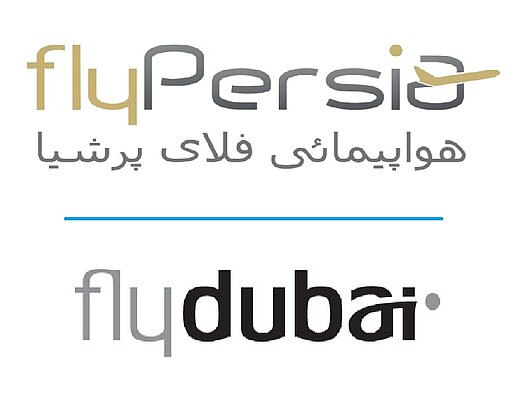In an opposition against EU trademark application flyPersia based on earlier EU trademark flyDubai, both designating airline services, the Opposition Division and the Board of Appeal had considered that:
- for the EU consumers who do not speak English, the word FLY is not a basic English word and is not understood
- DUBAI and PERSIA are perceived as a non-distinctive reference to a place, a destination
- in both trademarks, the figurative elements are decorative elements,
- the inherent distinctiveness of the earlier mark is normal and
- the signs are visually similar to at least an average degree and phonetically similar to a high degree.
They concluded that there was a likelihood of confusion between the trademarks.
The General Court returns to the examination of the distinctive and dominant elements of these trademarks:
- English word “FLY” is very often used in relation to airline services: this allows the relevant public which does not speak English but which frequently sees that term in relation to airline services to understand its meaning in the context of air transport;
- the term ‘fly’ often forms part of airline names and therefore it regularly appears on aircraft and in all forms of advertising relating to these services;
- the word element ‘fly’ does not have distinctive character in the context of the air-transport-related services.
Regarding the other elements:
- “dubai” is directly connected with the transport and travel services: it therefore lacks distinctive character;
- “Persia” is either associated to an existing territory, namely the Persian Gulf, or, for a non-negligible part of the relevant public, is perceived as a reference to a currently non-existent, if not imaginary, ancient empire. Therefore that term has either a descriptive character or a distinctive, but rather weak, character;
When comparing the signs, and taking into account the dominant elements « persia » and « Dubai », there is only a low degree of visual similarity and a low degree of phonetic similarity between the marks at issue.
The Court reminds that with regard to a trademark with a weak distinctive character, which has a lesser capacity to identify the goods or services for which it has been registered as coming from a particular undertaking, the degree of similarity between the signs should be high to justify a likelihood of confusion, or this would risk granting excessive protection to that trade mark and its proprietor.
In the present case, taking into account the low similarity of the marks and the weak distinctive character of the earlier mark, the Court concludes in the absence of likelihood of confusion.
T‑30/23 of 22/01/2025

